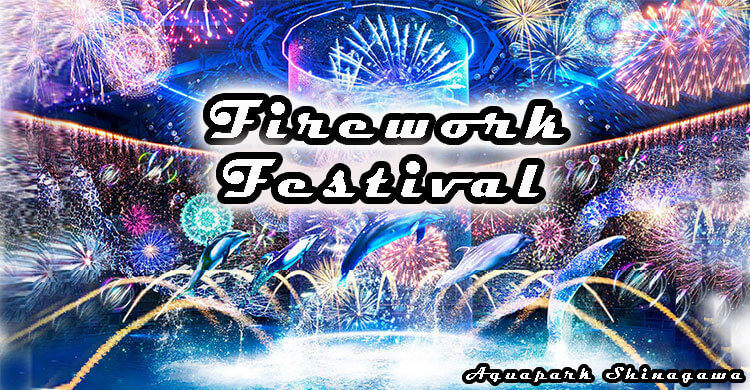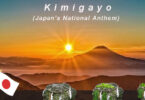The above photo is “Fireworks Festival” at Maxell Aqua Park Shinagawa in Shinagawa Prince Hotel that starts April 7, and will end on September 9, 2018.
The name of the event is SAKURA AQUARIUM by NAKED and it featured various attractions such as flower and light art, jellyfish ramble, and dolphin shows.
The latest information 2023: https://www.aqua-park.jp/special/hanabiaquarium2023/en_index.html
Hello everyone how is it going? We are now in the early part or middle of hot summer, but speaking of muggy summer, you can’t beat it ,one of “Cool Japan”, “Hanabi” (firework) (Hanabi in Japanese) ,can you?
This annual Hanabi-taikai (Fireworks Event) has roots dating back to 1732 when it was first held in remembrance of the those who had died of starvation in the plagues that afflicted Edo(present Tokyo) during that period.
Contents
What’s Hanabi(fireworks) ?
The Tokyo Hanabi Festival has been held every year since 1978 and is today one of the most famous and biggest firework events in the capital as well as in Japan attracting about one million spectators from the country, and overseas as well each year
About 20,000 fireworks of all shapes, sizes, and colors launched on July 29, Sunday this year after one day postponement due to No.12 typhoon because we have a custom of the festival in the last Saturday of July.
A display of giant Hanabe(fireworks) exploding in the night sky, one of the highlights of the Japanese summer. Each starburst lasts just 5 or 10 seconds, but these fleeting moments of beautiful pyrotechnics never fail to captivate the watching crowds.
More than 5,000 Hanabi displays are held throughout Japan every year. There are many different kinds of aerial display fireworks.
This is a “chrysanthemum”, the most popular type of Japanese firework. The explosion of the round shell sprays stars in all directions, forming a sphere like a ginat chrysanthemum in full bloom. Each star has a lingering trail, forming the shape of long petals.
These fireworks are known as “peonies”. Like the chrysanthemums, they produce a nice round burst, but the stars don’t have tails. The stars of the peonies often burn more brightly than those in the chrysanthemums.
This is a “willow”. It features strearmers of light that fall slowly to earth, much like the branches of a weeping willow tree.
The climax of any Hanabi display is a rapid-fire series of bursts called “star-mines”. Hundreds of fireworks are launched to form a blazing curtain in the sky.
The colours and sizes are carefully calculated to c
reate the perfect combinations. This type of pyrotechnic collage effect is an art form in its own right.
How fireworks are made?
There are the shells for chrysanthemum illusions. They are packed with numerous small powder charges known as stars, each of which becomes a blazing point of light when the shell explodes in the sky.
The stars are packed evenly inside the shell, so that they will scatter uniformly in all directions when the shell detonates, forming a spherical explosion.
Letting off small Hanabi with your family and friends is just as much a symbol of summer in Japan as the big pyrotechnic displays.
There are many different kinds of handheld Hanabi(fireworks). Perhaps the most popular of all are traditional spaklers called senko-hanabi.
Invented more than 150 years ago during the Edo period, they produce a magical show of sparks that lasts about 30 seconds. After the sparkler is lit, its appearance changes many times.
Hanabi hold a special place in Japanese hearts, sparkling for a few moments and then falling slowly from the sky, they symbolize both the spirit of summer and the transience of life.
What other Hanabi fireworks which are exciting in Japan?
There are many popular Hanabe festivals in Japan, each with its own history, style and atmosphere.
Here are some of the best ones according to the web search results:
★ Sumidagawa Fireworks Festival: The oldest and most famous fireworks festival in Tokyo, dating back to 1733. It is held on the last Saturday of July along the Sumida River and attracts millions of spectators. It features over 20,000 fireworks, including formed shells that burst into shapes like hearts and smiley faces.
Nagaoka Fireworks Festival: One of the biggest fireworks festivals in Japan, held in Nagaoka (Niigata prefecture) from August 1st to 3rd.
★ It started as a memorial service for the victims of WWII and features over 20,000 fireworks, including giant ones that span two kilometers of the Shinano River.
★ Omagari Fireworks Competition: A prestigious competition among firework makers, held in Daisen city (Akita prefecture) in late August.
It showcases the craftsmanship and creativity of the participants, and also includes a daytime display with colored smoke.
★ Tsuchiura Fireworks Competition: Another innovative and spectacular competition, held in Tsuchiura (Ibaraki prefecture) in late October.
It originated in 1925 as a tribute to deceased naval officers and has now evolved into a unique display of cutting-edge technology and design.
★ Kumano Fireworks Festival: A spectacular display of over 10,000 fireworks, held in Kumano city (Mie prefecture) on August 17th.
It is famous for its Niagara sparklers that are set under bridges and resemble waterfalls of light.
★ Kachimai Fireworks Festival: A dazzling show of over 20,000 fireworks, held in Takikawa city (Hokkaido prefecture) on August 13th. It is known for its starmines that create beautiful patterns in the sky
Finally, please enjoy the 2018 New Year Tokyo Fireworks, along with the beautiful sound of “Serenade”.
In addition, we have another blog which is the same title “Forget the muggy heat, mesmerizing by 20,000 Fireworks in the night sky of Tokyo on July 27, 2019″ to be visited, thanks


















Leave a Comment